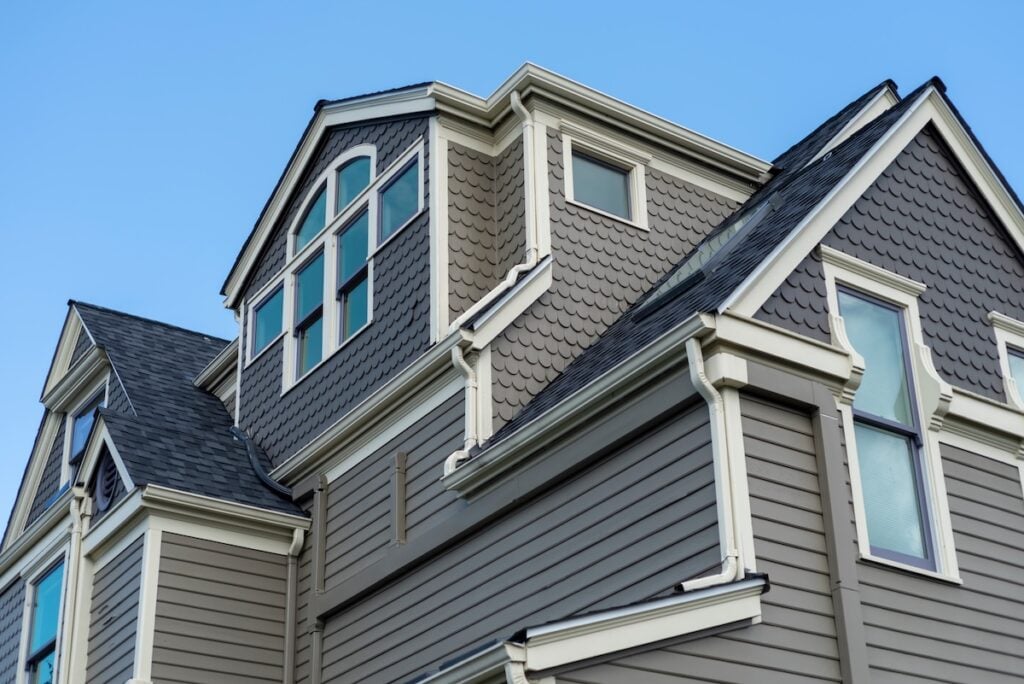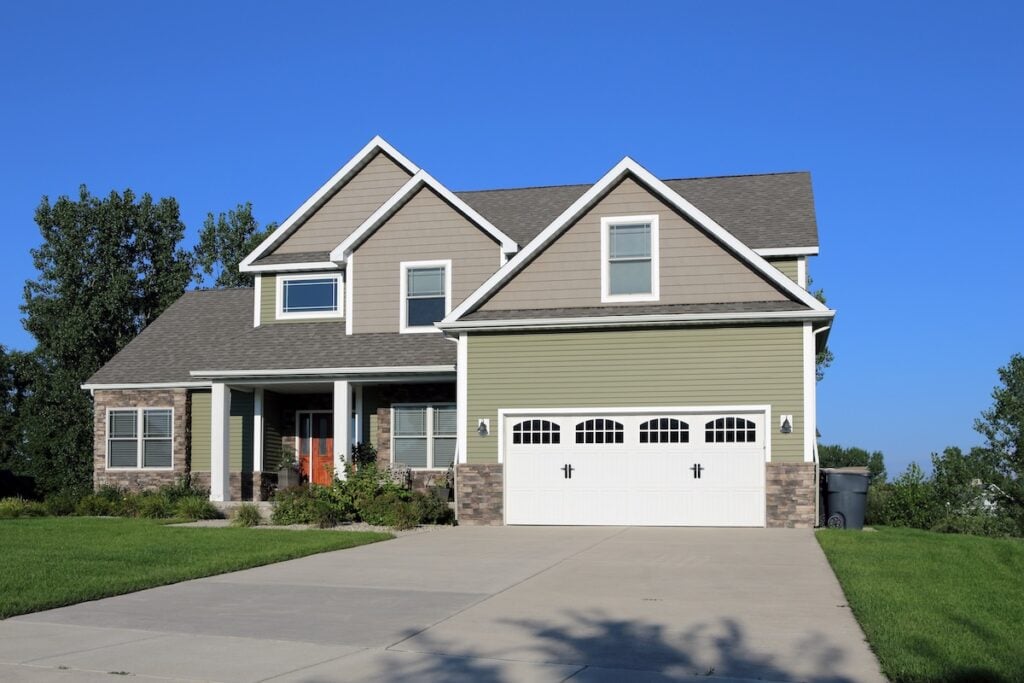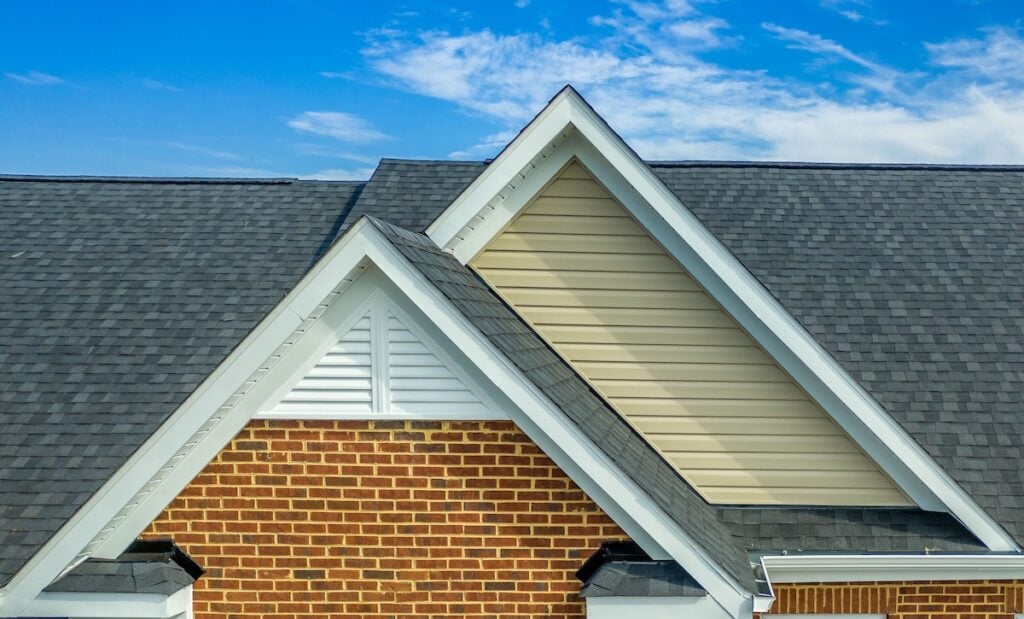
Exterior Trim Boards: How To Choose the Best Material?

Your home’s exterior trim boards might seem like a small detail, but they play a crucial role in both protection and appearance. These finishing touches around windows, doors, and rooflines shield your home from weather damage while adding visual appeal. With so many material options available, choosing the right exterior trim boards can feel overwhelming.
This guide will help you navigate the key factors to consider when selecting exterior trim boards, explore the top material options, and understand what makes each choice suitable for different situations. Whether you’re building new or replacing existing trim, you’ll discover:
- The essential factors that influence your trim board selection
- The 5 best materials for exterior trim boards
- Installation and maintenance considerations
🤔 Understanding Exterior Trim Boards

Exterior trim boards serve multiple purposes beyond simple decoration. They create clean lines around architectural features, cover gaps between different materials, and provide a finished look to your home’s exterior. More importantly, they act as a barrier against water infiltration and pest intrusion.
The trim around your windows and doors takes the most abuse from weather. Rain, snow, and UV rays constantly assault these areas. Your choice of material directly impacts how well your trim withstands these elements and how often you’ll need to repair or replace it.
Key Factors to Consider
- Climate and Weather Conditions: Choose materials suited to your local climate. Humid areas, coastal regions, and freezing temperatures each pose unique challenges like moisture damage, salt air corrosion, or expansion and contraction.
- Maintenance Requirements: Some materials need regular upkeep like painting or sealing, while others are low-maintenance. Decide if you prefer ongoing care or a “set it and forget it” solution.
- Budget Considerations: Look beyond initial costs. Factor in installation, maintenance expenses, and lifespan to find a material that balances durability and long-term savings.
- Aesthetic Preferences: Match your trim boards to your home’s style. Wood suits traditional homes, while composite or metal works for modern designs. Decide if you want the flexibility to repaint or stick with factory finishes.
👉 5 Best Materials for Exterior Trim Boards

Choosing the right material for exterior trim boards is essential for durability and curb appeal. The right trim can withstand harsh weather conditions while enhancing your home’s overall look..
1. Fiber Cement
Fiber cement is a durable and versatile material made by combining wood fibers, cement, and sand. It offers the appearance of wood while being highly resistant to moisture, insects, and fire. This makes it an excellent choice for homeowners seeking a long-lasting and low-maintenance option for exterior trim. Fiber cement is incredibly durable and can withstand harsh weather conditions without warping, rotting, or succumbing to insect damage. It can be painted in any color, giving homeowners the flexibility to match their aesthetic preferences. Additionally, its fire-resistant properties provide extra safety benefits, and it performs well in a wide range of climates, making it a go-to material for various regions. However, fiber cement does come with some drawbacks. Its upfront cost is higher than wood, and because of its composition, it typically requires professional installation. The material is also heavy, which may necessitate additional structural support during installation. Homeowners should also keep in mind that fiber cement needs repainting every 10 to 15 years to maintain its appearance.
2. Cellular PVC
Cellular PVC is a synthetic material that mimics the look of wood while eliminating the need for extensive maintenance. It is completely resistant to moisture, ensuring it never rots, warps, or splits, even in humid or wet conditions. Thanks to its factory-finished options, it often requires no painting, although it can be painted for a custom look. Cellular PVC can be cut and shaped like wood, making it easy to work with during installation. Its moisture-resistant properties make it especially well-suited for humid climates or areas prone to frequent rain. Despite these benefits, cellular PVC has its challenges. The material can become brittle when exposed to extremely cold temperatures, which may impact its long-term durability in colder climates. It is also prone to expansion and contraction with temperature changes, so careful installation is necessary to account for this. While it offers excellent performance, cellular PVC comes at a higher cost than traditional wood, and its factory finishes may have limited color options, which could be a disadvantage for homeowners seeking more variety.
3. Composite Materials
Composite trim boards are a blend of wood fibers and synthetic materials, designed to deliver the best qualities of both. These materials are known for their superior moisture resistance, making them ideal for areas with high humidity or frequent rain. With consistent dimensions and a uniform appearance, composite materials ensure a polished and professional look for any project. Many composite products also come with long-term warranties, offering peace of mind for homeowners. They are easy to work with using standard tools and come in various textures and finishes, providing plenty of design flexibility. However, composite materials do have their downsides. They are priced at a premium compared to traditional options, which may not suit every budget. Over time, some products may fade if not properly coated or maintained, requiring occasional upkeep to preserve their appearance. Additionally, certain composite materials require specific fasteners for installation, and availability can sometimes be limited in certain regions, making them harder to source.
4. Pressure-Treated Wood
Pressure-treated wood remains a popular choice for exterior trim due to its affordability and natural wood appearance. Modern treatment methods have improved its durability and environmental impact, making it a more sustainable option compared to older versions. It is widely available and easy to work with using standard tools, allowing homeowners or contractors to shape and install it with minimal effort. Additionally, pressure-treated wood can be stained or painted to match any desired look, providing great versatility in design. However, this material requires regular maintenance to prevent issues like warping, cracking, or twisting over time. The treatment chemicals used to enhance its durability may leach out, which could be a concern for some homeowners. Furthermore, pressure-treated wood is not suitable for all climates, especially those with extreme weather conditions, and it generally has a shorter lifespan compared to synthetic materials.
5. Aluminum
Aluminum trim boards are an excellent option for those seeking durability and weather resistance. Lightweight and easy to install, aluminum is a popular choice for soffits, fascia boards, and other exterior trim applications. It is highly resistant to corrosion and requires little maintenance, making it a hassle-free option for homeowners. Aluminum trim boards are available in a wide variety of colors and finishes, allowing homeowners to customize the look to suit their home’s style. With a long lifespan, aluminum provides a reliable and lasting solution for exterior design needs. However, it is not without its challenges. Aluminum can dent or scratch easily, which may impact its appearance over time. For some homeowners, the material’s industrial look may not align with the aesthetic of their home. Aluminum also expands and contracts with temperature changes, so careful installation is necessary to avoid complications. Once damaged, aluminum is difficult to repair, and the upfront cost is generally higher than that of wood options, which could deter budget-conscious homeowners.
🛠️ Maintenance and Longevity

Proper maintenance ensures your equipment performs efficiently and lasts longer, saving you money on repairs or replacements. Prioritizing longevity reduces waste and supports sustainable practices.
Regular Inspection
Inspecting your exterior trim boards annually is a critical part of maintaining your home’s exterior. Look for visible signs of damage, such as cracks, gaps, or loose pieces. These issues might seem small at first, but they can quickly worsen if left untreated. Check areas where caulk has failed, as this can allow water to seep in and cause further damage. Pay extra attention to spots where different materials meet, such as where wood meets brick or siding, as these junctions are particularly prone to wear and water intrusion. Also, examine places where water might collect, like near gutters, rooflines, or around windows and doors. Early detection of these problems can save you from costly repairs down the road.
Cleaning and Care
Keeping your exterior trim clean is essential for both its appearance and longevity. Most trim materials, whether wood, vinyl, or composite, benefit from routine cleaning to remove dirt, mold, or mildew that can build up over time. For wood trim, a soft cloth or sponge with mild soap and water is usually sufficient. Avoid using pressure washers on wood, as the high force can strip paint, damage the surface, or force water into the wood, leading to rot. For vinyl or composite trim, you may use a soft scrub brush and gentle cleaning solutions to loosen stubborn grime. Regular cleaning not only keeps your trim looking great but also allows you to spot potential issues like peeling paint or early signs of decay.
When to Replace
Knowing when to replace your exterior trim is just as important as inspecting and cleaning it. Certain warning signs indicate that replacement is necessary rather than repair. Extensive rot on wood trim is a clear indicator that the material has deteriorated beyond salvage. If multiple loose pieces are present or there is widespread paint failure, this is often a sign of deeper structural issues. Additionally, if repairs become frequent and costly, it may be more practical to replace the entire section of trim for long-term durability. Replacing damaged trim promptly not only enhances the visual appeal of your home but also protects it from further structural damage caused by water infiltration or pests.
🏠 Trust the Professionals at Greentek Roofing & Solar
At Greentek Roofing & Solar, we know that the right exterior trim boards are more than just a finishing touch—they’re an essential part of protecting and enhancing your home. With our unmatched expertise, industry certifications, and commitment to quality, you can trust our team to guide you through every step of your exterior improvement project.
Whether you’re replacing your roof, updating your trim, or embarking on a full exterior renovation, we’re here to deliver results that stand the test of time. Ready to elevate your home’s exterior? Contact Greentek Roofing & Solar today for a consultation!!

